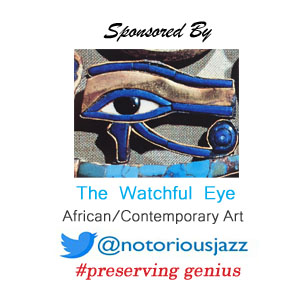
Daily Dose Of Jazz…
Haven Gillespie was born James Lamont Gillespie on February 6, 1888 in Covington, Kentucky, one of nine children of Anna (Reilley and William F. Gillespie. The family was poor and he dropped out of school in grade four to unsuccessfully find a job. His older sister, Lillian, who had married a printer in Chicago, Illinois offered him a job and in 1902 left home for the bustling city life.
A few years later, corresponding with a childhood sweetheart back in Covington, a forthcoming proposal led to marriage in 1909. With sixteen dollarsbetween the two of them, Gillespie soon landed a job as a typesetter for the Cincinnati Times-Star, ultimately maintaining his membership in the International Typographic Union until his death. He found work as a “plug” man, entertaining audiences at local vaudeville shows by playing and singing songs he had written.
His first break came in 1911 when he met Roy Steventon, performing with Mildred Lovejoy in a dancing act and teaming up they composed three songs for the act, You’re Just The Girl I’ve Met In My Dreams, When I Am Gone, and Winter Time Is Coming Around Too Soon. Though Haven was paid one and a half cents for each piece of sheet music sold, royalties only amounted to a few dollars over the next several years.
While touring to promote his songwriting, Gillespie began drinking heavily and would struggle with alcohol addiction most of his life. At age 23 and after a long night of drinking, he met Joe Ford, a printer with the Cincinnati Tribune. Ford took Haven home to sober up and the two men eventually developed a lifelong friendship.
Gillespie’s first major hit came in early 1925 with Drifting and Dreaming. He left for New York and became a journalist and composer of songs for vaudeville shows. He first gained notice in 1925 with collaborators Egbert Van Alstyne, Ervin R. Schmidt, and Loyal Curtis on Breezin Along With The Breeze, which was recorded by Josephine Baker, among numerous others.
He successfully collaborated with J. Fred Coots, Mitchell Parish, Henry Marshall, Henry and Charles Tobias, Neil Moret, Peter DeRose, Victor Young, Jack Little, Richard Whiting, Rudy Vallée, and Beasley Smith, to name a few. His Louisiana Fairy Tale, recorded by Fats Waller, was used as the first theme song in the PBS Production of This Old House.
Tin Pan Alley composer and lyricist Haven Gillespie, whose songs You Go To My Head, Beautiful Love and Santa Claus Is Comin’ To Town have become jazz standards, transitioned on March 14, 1975 in Las Vegas, Nevada.
More Posts: composer,history,instrumental,jazz,lyricist,music
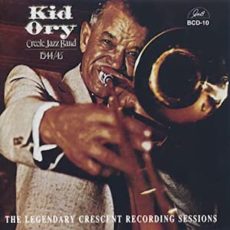
Daily Dose Of Jazz…
Bud Scott was born Arthur Budd Scott on January 11, 1890 in New Orleans, Louisiana. He played guitar and violin as a child and performed professionally from an early age. His first job was with New Orleans dance band leader John Robichaux in 1904 and as a teenager he played with Buddy Bolden. In 1911 he was playing guitar with Freddie Keppard’s Olympia Orchestra. In 1912 he left New Orleans with a large travelling show.
As a violinist he performed with James Reese Europe’s Clef Club Orchestra at a historic 1912 concert at Carnegie Hall, and the following year worked with Europe’s ensemble on the first jazz recordings on the Victor label.He would go on to play on a number of Victor Talking Machine Company ragtime recordings with James Reese Europe’s Society Orchestra in 1913.
A graduate of the Peabody School of Music, he was a notable rhythm guitarist in Chicago, Illinois’s Jazz Age nightclubs of the 1920s. Moving there in 1923, he became a member of King Oliver’s Creole Jazz Band, originating the now traditional shout, Oh, play that thing!, on Oliver’s recording of Dippermouth Blues. He also worked with Johnny Dodds and Jimmy Blythe, Erskine Tate, Jelly Roll Morton’s Red Hot Peppers and Richard M. Jones’ Jazz Wizards.
Scott was the first person to use a guitar in a modern dance orchestra, in Dave Peyton’s group accompanying Ethel Waters at Chicago’s Cafe de Paris. After performing and recording with Jimmie Noone’s Apex Club Orchestra in 1928 he moved to California. Making a living as a professional musician through the 1930s, when traditional jazz was eclipsed by big-band swing music, he formed his own trio. In 1944 Scott joined an all-star combination that evolved into Kid Ory’s Creole Jazz Band. This was an important force in reviving interest in New Orleans-style jazz in the 1940s, and he wrote the majority of the band’s arrangements.
In 1944 Bud joined an all-star traditional New Orleans band that was a leader of the West Coast revival, put together for the CBS Radio series The Orson Welles Almanac. He arranged most of the songs for Kid Ory’s band, of which he was a part. His talent for arranging earned him the title of The Master.
A stroke in 1948 forced his retireent from music. Guitarist, banjoist, violinist and vocalist Bud Scott, whose obituary ran on the front page of the Los Angeles Sentinel, transitioned in Los Angeles, California on July 2, 1949, aged 59.
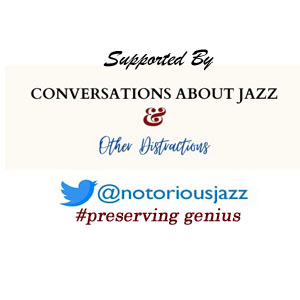
More Posts: arranger,banjo,buitar,history,instrumental,jazz,music,violin,vocal
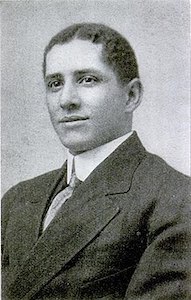
Daily Dose Of Jazz…
Harry Herbert Pace came into this world on January 6, 1884 in Covington, Georgia. No information is available about his parents but his grandfather was a slave related to his master who ultimately freed him. The young lad however completed elementary school at the age of twelve.
Enrolled at Atlanta University, Pace found work as a printer’s devil or an apprentice mixing tubs of ink and fetching type to pay his way through school. However, after learning that pay equity was higher for whites employees than black employees he left and began working odd jobs on campus instead. While at school he met W. E. B. Du Bois, who was one of his professors, and he went on to graduate valedictorian of his class in 1903, at 19.
A move to Memphis, Tennesse saw Harry going into the printing business with Du Bois. Then two years later they put together the short-lived magazine The Moon Illustrated Weekly. By 1912 he was collaborating and writing songs with W. C. Handy, who took a liking to him. They founded the Pace and Handy Music Company, which brought him to New York City. Around 1920, the company began working with composers William Grant Still and Fletcher Henderson.
A visionary who saw that the growing popularity of the phonograph would shift the music business as it reached a wider audience wanted to expand beyond selling sheet music for parlour playing. Handy had no interest in changing the business, so Pace resigned.
While living in 1921 Harlem, New York he established Black Swan Records after singer Elizabeth Taylor Greenfield, who was called the Black Swan. Their offices were in Times Square and he set up a recording studio in the basement of his brownstone. He brought in Henderson as recording manager and Still as arranger. The label’s first hit was a recording of Down Home Blues and Oh, Daddy, sung by Ethel Waters. Even with outstanding artists the label failed, went into bankruptcy and was sold to Paramount Records in 1923.
In 1925, Pace founded the Northeastern Life Insurance Company in Newark, New Jersey, which became the largest African-American-owned business in the North during the 1930s. Moving to Chicago, Illinois he attended the Chicago-Kent College of Law, receiving his degree in 1933. Around this time, he began passing for White and opened a law firm in downtown Chicago in 1942. His progeny would not discover his African ancestry until well after his death.
Music publisher, record label owner and life insurance executive Harry Pace, who is featured on the documentary series Profiles of African-American Success and in the miniseries The Vanishing of Harry Pace on Radiolab. transitioned on July 19, 1943, in Chicago.

More Posts: history,instrumental,jazz,music,music publisher,record label owner
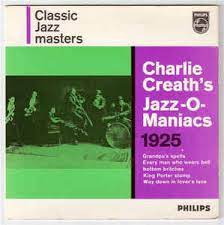
Daily Dose Of Jazz…
Charles Cyril Creath was born on December 30, 1890 in Ironton, Missouri and at an early age was playing in traveling circuses and in theater bands in the decade of the 1900s. He moved back to St. Louis, Missouri around 1919 and there he led bands playing on the Streckfus company’s riverboats traveling on the Mississippi River between New Orleans, Louisiana and St. Louis.
His ensembles became so popular that he had several bands under his own name at one time in the 1920s. A young Gene Sedric, later a mainstay of Fats Waller’s combo and orchestra, played with Creath on riverboats in the 1920s, and perhaps early 1930s. He co-led a group on the SS Capitol in 1927 with Fate Marable.
Late in the 1920s Charlie suffered from an extended illness, and primarily played saxophone and accordion instead of trumpet afterwards. He and Marable played together again from 1935 to 1938, and toward the end of the decade he opened a nightclub in Chicago, Illinois. He worked in an airplane manufacturing plant during World War II and retired in 1945. His last years were plagued with illness.
Aside from his brother-in-law, Zutty Singleton, members of Creath’s bands included Ed Allen, Pops Foster, Jerome Don Pasquall, Leonard Davis, and Lonnie Johnson. He recorded as a leader for Okeh Records between 1924 and 1927 billed as Chas. Creath’s Jazz-O-Maniacs, which were some of the hottest and most collectable jazz items recorded for OKeh’s race 8000 series.
Trumpeter, saxophonist, accordionist and bandleader Charlie Creath passed away on October 23, 1951, in Chicago.
More Posts: accordion,bandleader,history,instrumental,jazz,music,saxophone,trumpet

Daily Dose Of Jazz…
Spencer Williams was born on October 14, 1889 in New Orleans, Louisiana and was educated at St. Charles University in his hometown. Performing in Chicago, Illinois by 1907, he moved to New York City about 1916 where he co-wrote several songs with Anton Lada of the Louisiana Five. Among those songs was Basin Street Blues, which became one of his most popular songs and is still recorded by musicians to this day.
Touring Europe with bands from 1925 to 1928, during this time he wrote for Josephine Baker at the Folies Bergère in Paris. Returning to New York City for a few years, at the end of the Roaring Twenties, Williams was tried but then acquitted on a charge of murder. In 1932, he was back in Europe where he spent many years in London, England before moving to Stockholm in 1951.
A prolific composer, some of Spencer’s compositions that became hit songs were Basin Street Blues, I Ain’t Got Nobody, Royal Garden Blues, Mahogany Hall Stomp, I’ve Found a New Baby, Tishomingo Blues and Everybody Loves My Baby, among numerous others.
Returning once again to New York City in 1957, pianist, composer, vocalist and bandleader Spencer Williams, was posthumously inducted into the Songwriters Hall of Fame. He passed away on July 14, 1965 in Flushing, New York.
More Posts: bandleader,composer,history,instrumental,jazz,music,piano,vocal




